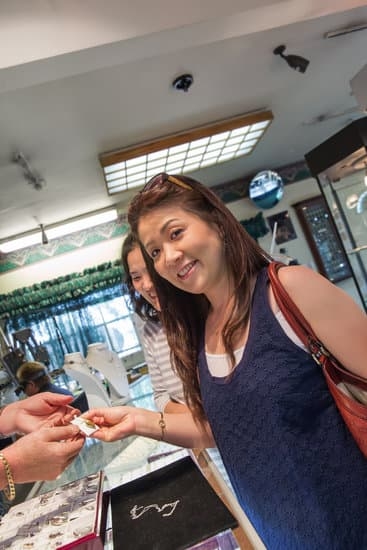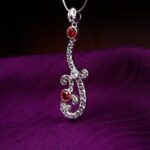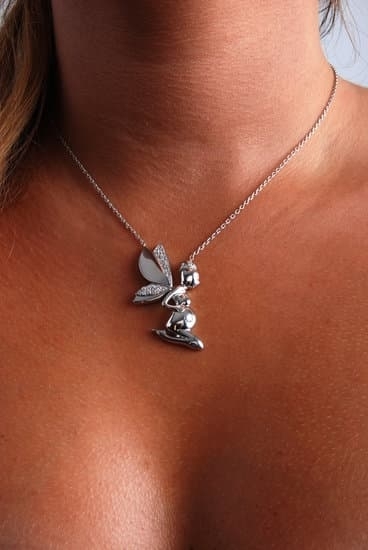What is estate fine jewelry? Estate fine jewelry refers to pieces that have been previously owned, often from the estate of a deceased person. These items are typically of high quality, featuring precious metals and gemstones. In this article, we will explore the history and characteristics of estate fine jewelry, as well as its significance in today’s market.
Estate fine jewelry holds unique value and appeal due to its historical significance and timeless elegance. From vintage engagement rings to heirloom necklaces, these pieces carry with them stories and memories that add to their allure. Understanding the origins and distinguishing features of estate fine jewelry can help buyers and sellers navigate the market with confidence.
In the following sections, we will delve into the history and origin of estate fine jewelry, highlighting what sets it apart from other types of jewelry. We will also discuss its significance in today’s market, offering tips for those interested in buying or selling estate fine jewelry.
Additionally, we will provide guidance on how to care for and maintain these valuable pieces for generations to come. As we explore famous examples of estate fine jewelry throughout history, it becomes apparent why these pieces are considered a valuable investment.
The History and Origin of Estate Fine Jewelry
Estate fine jewelry holds a significant place in the world of luxury accessories, with its rich history and origins dating back to ancient civilizations. The term “estate” refers to jewelry that is previously owned, and often signifies pieces that are at least 100 years old. The allure of estate fine jewelry lies not only in its exquisite craftsmanship and timeless beauty, but also in the stories and legacy behind each piece.
The history of estate fine jewelry can be traced back to ancient Egypt, where pharaohs and royalty adorned themselves with opulent jewels made from gold, precious gemstones, and ornate designs. Over the centuries, estate fine jewelry has been synonymous with status, wealth, and heritage, passed down through generations as treasured heirlooms.
Throughout history, estate fine jewelry has been influenced by various eras and cultural movements such as the Art Deco period, Victorian era, and Renaissance period. Each era left its mark on estate jewelry through distinct design elements and craftsmanship techniques that continue to captivate collectors and enthusiasts today.
What sets estate fine jewelry apart from other types of jewelry is not only its age but also the attention to detail and artistry that went into creating each piece. Unlike modern mass-produced jewelry, estate fine jewelry often showcases intricate designs and expert craftsmanship that reflect the style and trends of their respective time periods. This attention to detail adds to the allure of estate fine jewelry as a valuable investment with a unique story to tell.
Characteristics of Estate Fine Jewelry
Estate fine jewelry refers to high-quality, often handmade pieces of jewelry that have been previously owned. These pieces are typically adorned with precious stones and metals, and carry a sense of history and sophistication. What sets estate fine jewelry apart from other types of jewelry is not only its age but also its craftsmanship, quality, and unique design.
- Unique and Timeless Design: Estate fine jewelry often features intricate details and unique designs that set them apart from modern mass-produced jewelry. These pieces may showcase a particular style that was popular during the time they were created, such as Art Deco or Victorian-inspired designs.
- Quality Materials: Estate fine jewelry is crafted using high-quality materials such as 18k gold, platinum, diamonds, emeralds, sapphires, and rubies. These materials ensure that the pieces retain their value over time and do not easily tarnish or lose their luster.
- History and Story: Each piece of estate fine jewelry carries with it a sense of history and story. Whether it’s an engagement ring passed down through generations or a necklace worn by royalty, these pieces often hold sentimental value and are considered heirlooms.
Estate fine jewelry holds significant appeal due to its timeless nature, superior craftsmanship, and historical significance. These characteristics make estate fine jewelry highly sought after by collectors and individuals looking for unique investment pieces that stand the test of time.
What Sets Estate Fine Jewelry Apart From Other Types of Jewelry
Estate fine jewelry is a unique category of jewelry that sets itself apart from other types in several ways. First and foremost, estate fine jewelry refers to pieces that have been previously owned and are at least 50 years old. This distinguishes it from contemporary jewelry, which is newly made and may not hold the same historical or sentimental value as estate pieces.
Additionally, estate fine jewelry often features craftsmanship and design techniques that are no longer commonly used in modern jewelry-making. This gives each piece a sense of timelessness and artistry that is highly sought after by collectors and connoisseurs. The use of high-quality materials such as precious metals, gemstones, and enamel work also adds to the allure of estate fine jewelry.
Furthermore, what sets estate fine jewelry apart is its potential for investment. Unlike trendy fashion jewelry that may lose its appeal over time, estate pieces often increase in value as they age. This makes them not only beautiful adornments but also valuable assets for those who collect or invest in jewelry.
| Characteristics | Examples |
|---|---|
| At least 50 years old | Antique diamond brooch from the early 1900s |
| Historical craftsmanship and design | Victorian-era gold filigree necklace |
| Potential for investment | Art Deco sapphire ring from the 1920s |
The Significance of Estate Fine Jewelry in Today’s Market
Estate fine jewelry holds a significant place in today’s market due to its timeless beauty, historical value, and lasting quality. As the demand for unique and antique pieces continues to grow, estate fine jewelry has become increasingly sought after by collectors, investors, and individuals looking for one-of-a-kind accessories. With its blend of craftsmanship, history, and rarity, estate fine jewelry offers a distinct allure that sets it apart from modern pieces.
One of the key reasons for the significance of estate fine jewelry in today’s market is its connection to the past. Each piece carries with it a sense of history and tradition, often reflecting the design trends and cultural influences of the era in which they were created.
This historical significance adds a layer of charm and character to estate fine jewelry that cannot be replicated by contemporary pieces. Additionally, estate fine jewelry offers a glimpse into the craftsmanship and techniques of bygone eras, allowing collectors to appreciate the artistry of previous generations.
Apart from its historical value, estate fine jewelry is also cherished for its enduring quality. Many vintage pieces are crafted from high-quality materials such as gold, silver, diamonds, and gemstones, resulting in heirloom pieces that can be passed down through generations. The superior craftsmanship and attention to detail found in estate fine jewelry contribute to its longevity and durability, making it a valuable investment for those seeking exceptional beauty combined with lasting quality.
| Characteristics | Importance |
|---|---|
| Timeless beauty | In today’s market due to its timeless beauty |
| Reflecting design trends | reflectionofthe design trendsand cultural influences |
Tips for Buying and Selling Estate Fine Jewelry
Estate fine jewelry holds a special place in the hearts of collectors and enthusiasts alike. Whether you are looking to expand your collection or ready to part ways with a beloved piece, knowing the ins and outs of buying and selling estate fine jewelry is crucial. Here are some essential tips to consider.
Do Your Research
Before buying or selling estate fine jewelry, it’s important to educate yourself on the current market trends, popular designers, and the value of specific pieces. Understanding the history and background of the jewelry you’re interested in can also give you an edge when negotiating prices.
Seek Authenticity
When purchasing estate fine jewelry, always seek out reputable dealers or auction houses that can provide authentication for the piece. This ensures that you are getting the real deal and not a replica or counterfeit item. On the other hand, if you are selling estate fine jewelry, having proof of authenticity can significantly increase its value.
Consider Maintenance and Appraisal
For prospective buyers, consider the maintenance requirements of estate fine jewelry before making a purchase. Some pieces may require special care due to their age or delicate nature. Additionally, obtaining an appraisal from a certified gemologist can give you an accurate understanding of the piece’s value before buying or selling.
Overall, navigating the world of buying and selling estate fine jewelry requires patience, diligence, and knowledge. By following these tips, you can ensure that your experience is both rewarding and successful.
How to Care for and Maintain Estate Fine Jewelry
Estate fine jewelry is a valuable and timeless investment that requires proper care and maintenance to ensure its longevity and beauty. Whether you have inherited estate fine jewelry or purchased it yourself, it is important to know how to properly care for these pieces to preserve their value and allure. Here are some essential tips for caring for and maintaining estate fine jewelry:
- Regular Cleaning: To keep your estate fine jewelry shining, it is important to regularly clean the pieces. You can use a gentle jewelry cleaner or a solution of mild soap and warm water to carefully clean the jewelry. Be sure to use a soft-bristled brush to clean hard-to-reach areas, and always pat the pieces dry with a soft cloth.
- Storage: Proper storage is crucial for maintaining estate fine jewelry. Store each piece separately in a soft pouch or lined jewelry box to prevent scratching and tangling. It is also advisable to store estate fine jewelry away from direct sunlight and extreme temperatures.
- Professional Maintenance: Consider having your estate fine jewelry professionally inspected and cleaned by a reputable jeweler at least once a year. This will help identify any potential issues with the pieces and ensure that they are in good condition.
Taking the time to care for and maintain your estate fine jewelry will not only help retain its beauty but also safeguard its value. By following these simple tips, you can enjoy your timeless pieces for years to come.
In addition, be mindful when wearing estate fine jewelry. Avoid exposing the pieces to harsh chemicals, extreme temperatures, or rough activities that could potentially damage them. With proper care, estate fine jewelry can be passed down as cherished heirlooms for generations.
Famous Examples of Estate Fine Jewelry in History
Queen Marie Antoinette’s Jewelry
One of the most famous examples of estate fine jewelry in history is the collection of jewelry belonging to Queen Marie Antoinette. This extravagant collection included stunning pieces such as a natural pearl and diamond pendant necklace, a diamond tiara, and an ornate diamond-encrusted brooch. The exquisite craftsmanship and rare gemstones used in these pieces make them highly sought after by collectors and connoisseurs of estate fine jewelry.
The Hope Diamond
Another iconic example of estate fine jewelry is the Hope Diamond, which has a long and fascinating history that dates back centuries. This breathtaking blue diamond has been passed down through royal families and private collectors, acquiring an air of mystery and allure along the way. Its rare color and large size make it one of the most famous gems in the world, cementing its status as a legendary piece of estate fine jewelry.
The Patiala Necklace
The Patiala Necklace is a legendary piece of estate fine jewelry known for its extravagant design and exceptional craftsmanship. Created by the House of Cartier in 1928 for Maharaja Bhupinder Singh of Patiala, this magnificent necklace features five rows of stunning diamonds, including the famed “De Beers” diamond weighing nearly 234 carats. The intricate design and extraordinary size of the stones in this necklace make it a remarkable example of estate fine jewelry with historical significance.
Conclusion
In conclusion, estate fine jewelry represents a valuable and timeless investment for many reasons. Its rich history and origin make each piece unique, with stories and craftsmanship passed down through generations. The characteristics of estate fine jewelry, such as high-quality materials and exquisite designs, set it apart from other types of jewelry, making it a highly sought-after choice for collectors and enthusiasts alike.
Furthermore, the significance of estate fine jewelry in today’s market cannot be overstated. As an investment, these pieces often appreciate in value over time, providing both financial and sentimental returns for those who own them. Tips for buying and selling estate fine jewelry are important to consider, as they can help maximize the potential value of each piece.
Lastly, caring for and maintaining estate fine jewelry is crucial to preserving its beauty and value for future generations. By understanding the unique needs of these pieces, owners can ensure that their estate fine jewelry remains stunning for years to come. Overall, the enduring appeal and legacy of estate fine jewelry make it a worthwhile investment for anyone who appreciates the artistry and history behind each piece.
Frequently Asked Questions
Is Estate Jewelry Worth Anything?
Estate jewelry can definitely be worth a significant amount, especially if it is high-quality, rare, or carries historical significance. Factors such as the materials used, the craftsmanship, the designer, and the condition of the piece all play a role in determining its value.
Sometimes estate jewelry can even be more valuable than brand-new pieces due to their unique characteristics and history.
What Does Estate Mean in Jewelry?
In the context of jewelry, “estate” simply refers to any piece that has been previously owned. It doesn’t necessarily mean that it came from an actual estate or that it is antique in nature. Estate jewelry can range from vintage pieces to those that are just a few years old but have been resold.
Is It Good to Buy Estate Jewelry?
Buying estate jewelry can be a great option for those looking for unique or one-of-a-kind pieces with character and history. It allows buyers to acquire high-quality items at potentially lower prices than buying new from a retail store.
Additionally, purchasing estate jewelry can also be more sustainable since it involves repurposing and reusing existing pieces rather than supporting new manufacturing processes. However, it’s important to carefully research and authenticate any potential purchase to ensure its quality and value.

Welcome to my jewelry blog! My name is Sarah and I am the owner of this blog.
I love making jewelry and sharing my creations with others.
So whether you’re someone who loves wearing jewelry yourself or simply enjoys learning about it, be sure to check out my blog for insightful posts on everything related to this exciting topic!





